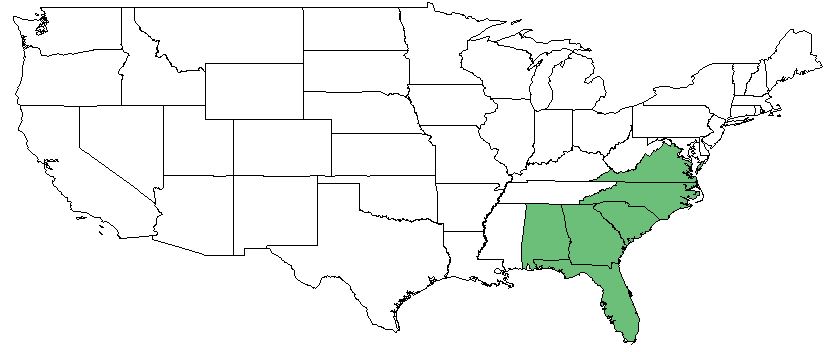Morella pumila
| Morella pumila | |
|---|---|

| |
| Photo by Gary Fleming at the Digital Atlas of the Virginia Flora | |
| Scientific classification | |
| Kingdom: | Plantae |
| Division: | Magnoliophyta - Flowering plants |
| Class: | Magnoliopsida - Dicots |
| Order: | Fagales |
| Family: | Myricaceae |
| Genus: | Morella |
| Species: | M. pumila |
| Binomial name | |
| Morella pumila L. | |

| |
| Natural range of Morella pumila from Weakley [1] | |
Contents
Taxonomic Notes
Synonyms: Myrica pusilla Rafinesque, Morella cerifera (Linnaeus) Small, Myrica cerifera Linnaeus var. pumila Michaux, and Cerothamnus pumilus (Michaux) Small.
Varieties: none
Description
M. pumila, also known as Dwarf Wax-Myrtle, is a native perennial that varies in growth habit from an evergreen shrub and subshrub to a tree growth. It is a member of the Myricaceae family, and can grow up to 6 feet high. The species is dioecious, with aromatic leaves and root nodules that help fix nitrogen in the soil. As well, it has rhizomatous roots which can propagate to form new growth. [2]
Distribution
Ecology
Habitat
Seed bank and germination
The species requires a period of cold, moist stratification before germinating, where an average germination time is a month to 90 days. However, wax myrtles can also be propagated from semi-hardwood and soft cuttings treated with a rooting hormone. [2]
Use by animals
M. pumila is used by wild birds as a source of food, and the branches are also utilized by wild birds for nesting and perching habitat. [2]
Conservation and Management
Cultivation and restoration
This Wax-Myrtle is popular for cultivation due to its ornamental value. M. pumila is also a good plant to use for native area restoration in its native communities like sandy coastal and woodland communities. It is a good plant for dune stabilization and further restoration. [2]